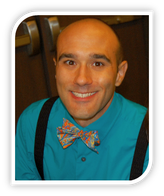This summer I had the privilege to volunteer as an Athletic Trainer in the Central American country Belize. I learned about this opportunity through the Christian Sports Medicine Alliance (CSMA). CSMA is a group of Athletic Trainers whose mission is to take Athletic Training and the gospel to other nations. Nations such as Belize do not have Athletic Trainers, and through my time spent there I even learned that there are only three orthopedic surgeons in the whole country. Belize is about the size of Massachusetts with a population around 350,000. As I was preparing to head to Belize, I thought I would encounter a lot of soccer (futbol as it’s commonly called) and I didn’t know what other sports I might encounter. I was greatly surprised to find that Belize celebrates many sports: volleyball for both girls and boys, basketball, tennis, and even fast-pitch softball. With the develop of sport in Belize comes sport injuries, and this is where I came in.
I volunteered at two different futbol tournaments, youth camps put on by the Belmopan Sports Council, and with Youth With A Mission (YWAM) sports teams in their training. One of the first events I volunteered with in Belize was a U-13 football tournament for all of Central America being hosted in Belize. The tournament included basketball, table tennis, volleyball, and futbol. I was in the capital city Belmopan providing medical care for the futbol players. I was also fortunate enough to work specifically with the Belize team during their training before the tournament. I learned a lot at the games about communication and how my style of treatment and care differs from others. Many coaches and players like the use of “cold spray.” I had never used cold spray before as I tend to treat mainly through manual therapy. It took a lot of education on my part to convince players and coaches that what I was doing would help the athlete. This is just one example of the many things I learned during my time in Belize.
There are three big lessons that I learned in Belize about myself and about Athletic Training. First the world of sports is growing internationally and with that comes sports injuries and the need for Athletic Trainers. As Athletic Trainers, we are uniquely qualified to care for athletic injuries, and I believe as a profession we will continue to see areas for Athletic Training to grow and expand. Second I learned that I have to be flexible. In Belize I didn’t have many resources. I didn’t even have a treatment table most of the time. I had to be flexible and come up with solutions to problems I encountered; I had to think of exercises and treatment that I could do without equipment. To go along with this, I also learned that communication is key. When I opened up and communicated, doing my best to value the Belize culture, the athletes started to trust me more. They were more willing to try new treatments or rehabilitation techniques that I suggested; they became more receptive to care.
Getting out of your comfort zone and challenging yourself in new ways is a great way to grow professionally. I learned about myself as an Athletic Trainer and about how to work in a different culture. I encourage you, the reader, as a student, professional, or educator to get out of your comfort zone. Find a trip that you can volunteer for and experience Athletic Training in a new culture. It will be well-worth your time and you might even have some fun along the way.
Marissa Yorgey, MS, LAT, ATC
Athletic Trainer Linn-Mar High School
UnityPoint St. Luke's Sports Medicine
[email protected]


 RSS Feed
RSS Feed
